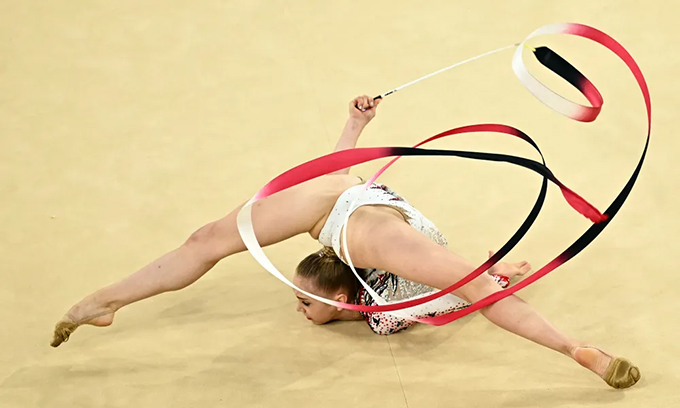
Have you ever wondered why men don’t compete in rhythmic gymnastics? The discipline made its Olympic debut at the 1984 Los Angeles Games. 44 years later, at the 2028 Los Angeles Olympics , it will still be a women’s-only sport.
However, in Japan, a men’s rhythmic gymnastics discipline was created at the beginning of the 20th century. Its aim was to consolidate the presence of this sport in the Olympics, since, according to the Olympic Charter, for a discipline to be considered Olympic, it must guarantee the globality of its practice .
Spain has also been one of the pioneer countries in promoting the men’s category through the Royal Spanish Gymnastics Federation . Unlike the Japanese version, which has a more martial character, the Spanish version proposes a competition on equal terms with the women’s category. This has generated some controversy, but it underpins the new challenges of rhythmic gymnastics.
Perception as a women’s sport
The fact that men do not compete in this discipline at the Olympics does not help young people to perceive it as a sport suitable for both sexes. And yet, rhythmic gymnastics can be an effective way of conditioning children and adolescents, which is highly recommended in schools.
The development of coordination between the body and objects , the work of basic and generic motor skills, such as jumping, turning or throwing, as well as the execution of rhythmic movements are some examples of what rhythmic gymnastics can contribute to Physical Education. Of course, it must be adapted to the possibilities and limitations of the participants and worked on through play.
Rhythmic gymnastics at school or college
The best way to introduce rhythmic gymnastics into physical education classes is with playful “rhythmic gymnastics challenges” . These will allow students to learn about the support elements and movements with the apparatus and, at the same time, work on the generic motor skills of mastery of their own body and the mobile.
An example of a practical proposal based on this type of challenge with a playful approach is “The goose of gymnastic skills”. This proposal is based on the board game “The goose” in which players advance around the board by throwing a dice and overcoming different motor tests.
For example, throwing the ball, turning on its own axis and catching the ball without it falling to the ground or performing a side roll without going outside a line painted on the ground. In this way, if the test is passed, the player can roll the dice again to continue playing.
How to get everyone involved
It is advisable to use cooperative learning , with mixed and heterogeneous groups , something that contributes to the participation of everyone even if there are differences in the level of motor competence or there is no positive predisposition towards learning .
It is also good to include final reflections, since thinking and reflection routines help students to internalize patterns of behavior . For example, it is essential to hold an initial meeting in which questions are asked regarding the correct execution of a movement: “How do you think it is most effective to execute a throw?” or “Where should you look when an object is in the air?” In this way, during the session, the learner can execute their movements trying to answer that initial question, which will be discussed in a final meeting where the participants’ reflections are shared.
Fourthly and lastly, it is suggested that the students become the protagonists , experiencing each gymnastic proposal based on prior knowledge and development and on attainable motor objectives . In other words, it is intended that each boy or girl establishes their limits and challenges. Each gymnast must build themselves by understanding what they are and are not capable of doing.
Physical education and gender stereotypes
Rhythmic gymnastics sessions in Physical Education can be a good setting to fight against gender stereotypes, based on a coeducational approach that promotes equality and respect. To do this, we can take advantage of that moment of reflection after the session so that students become aware of their attitudes, beliefs and group relationships.
It is not enough to establish mixed groups, but rather attitudes of respect and equality and a non-stereotypical vision of sport must be promoted. It is highly recommended to attend men’s and women’s rhythmic gymnastics shows and participate in mixed sports competitions or meet national and international leaders.
Contributing to the motor, emotional, cognitive and social development of boys and girls can be achieved with motivation and a positive attitude in a climate of respect, tolerance and equality.
Author Bios: Antonio Luis Quiñonero Martínez is Professor of Body Expression Didactics at the University of Murcia, Maria Isabel Cifo Left is an Interim rofessor. Department of Musical, Plastic and Body Expression Didactics. Area of Body Expression Didactics at the University of Granada and Maria Jose Ingles Martos is a Physical Education Teacher at the University of Murcia
